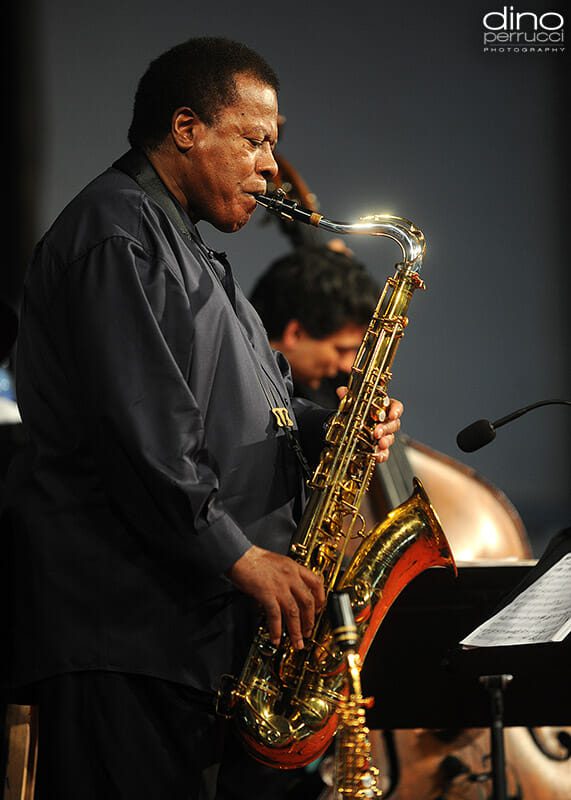
When Wayne Shorter died on March 2, a few months shy of his 90th birthday, the sense of loss felt throughout the jazz community and the music world in general was matched only by the immense gratitude of all who benefited from his genius over the course of his amazing life. It is no exaggeration to say that he was one of the greatest instrumentalists and composers of the late 20th and early-21st centuries. The evidence for that claim is abundant in the body of work that he created.
Few musicians can say that they helped initiate revolutionary change in their chosen genre. Shorter did so multiple times during a career that lasted for over 60 years, stretching from the end of the bebop era and encompassing the tumultuous beginnings of free jazz, the advent of modal improvisation, the dawn of fusion, the introduction of international influences and more. He traversed all these changes with remarkable grace and a constant commitment to artistic change and growth.
Born in Newark, N.J., in 1933, Shorter played clarinet in his teens, then switched to tenor saxophone. He absorbed the music of such masters as Lester Young, John Coltrane and Sonny Rollins, developing an individual voice that reflected those influences without sounding imitative of any of them.
After garnering some notice in his hometown in the late 1950s, he was brought to the attention of drummer Art Blakey, whose ever-changing ensemble, The Jazz Messengers, was a primary training ground for new talent. Joining Blakey’s band, Shorter rapidly proved his mettle as a featured soloist and composer in some of the best of all the Messengers lineups, alongside trumpeter Lee Morgan, pianists Bobby Timmons and Cedar Walton, and trombonist Curtis Fuller, among others.
While still with Blakey, Shorter made a few fine, straight-ahead albums of his own for Vee-Jay Records, but his career trajectory was forever changed when he signed with arguably the most important label in jazz history, Blue Note Records. It was on that label where his brilliance as composer, player and bandleader truly blossomed thanks to a series of records that utilized Blue Note’s astonishingly deep pool of players.
Almost simultaneously to joining Blue Note, Shorter received another life-altering call—an invitation to join the quintet of one of the towering figures in jazz, trumpeter/ composer Miles Davis. With pianist Herbie Hancock, bassist Ron Carter and drummer Tony Williams, the group would quickly establish itself among the greatest in the history of the genre, improvising at a seemingly telepathic level of communication.
Shorter shined not only as a featured soloist but also as one of the band’s primary composers. He stayed on through the end of the Quintet, helping to facilitate Miles’s next big change, the startling and controversial electrification of his music, which can be heard on albums like In a Silent Way and Bitches Brew. From there, it was a logical progression to the saxophonist’s own next great leap forward: the formation, with fellow Davis alumnus Joe Zawinul, of the trailblazing fusion band Weather Report. A great group from the start, Weather Report’s biggest breakthrough came with the 1976 addition of another radical musical genius, bassist Jaco Pastorius, resulting in one of the few jazz ensembles that could fill arenas usually reserved for rock stars.
Over time, Shorter’s instrumental statements became simpler, almost minimalist, in nature, eschewing dense torrents of sound in favor of more terse but judiciously placed interjections (increasingly stated on soprano saxophone rather than tenor). This was met with some resistance by fans who favored his fierier playing, but these choices were always made in service to the musical context, working especially well in Weather Report, where Shorter’s modesty provided a perfect counterbalance to the more extroverted personalities of Zawinul and Pastorius. (This development may also be seen as an extension of Shorter’s longtime practice of Buddhism.) While he’d always been the consummate collaborator, his growing inclination to let the silences speak as eloquently as the notes brought him ever closer to a place approaching, and even attaining, true egolessness.
Weather Report’s success helped earn Shorter recognition from admirers in other genres, including rock and pop, resulting in collaborations with such prominent artists as Steely Dan, Carlos Santana, Joni Mitchell and, on one memorable occasion, Jerry Garcia.
In his post-Weather Report years, Shorter’s reach continued to expand and grow; he regularly generated new work, while acknowledging his luminous past thanks to occasional reunions with his fellow Miles Davis Quintet alumni, most frequently his dear friend Herbie Hancock. As a leader and guest with other artists, he became very much the same kind of mentor to emerging artists that Blakey and Davis had been to him, helping to introduce his audience to ascendent stars like John Patitucci, Terri Lyne Carrington, Danilo Pérez, Brian Blade and more.
To the very end of his life, he kept seeking and finding new modes of expression, consistent with his oft-stated definition for his chosen art form: “To me, jazz means, ‘I dare you.’” In Shorter’s case, answering that dare to himself resulted in the opera (…Iphigenia), which was created in collaboration with bassist/vocalist Esperanza Spalding and visionary architect Frank Gehry. He then ventured into the visual realm for his final studio project, 2018’s Emanon. A lifelong lover and collector of comic books and an avid fan of science fiction in print and on film, Shorter conceived and co-created a 74-page graphic novel, included in the album package for the epic two-hour-plus work.
There can be no denying that Shorter’s physical absence will be keenly felt. But he will remain a powerful presence, thanks to his vast and extraordinary body of recordings, dozens of brilliant compositions that will long be covered and reinterpreted by others, and the work of future generations of artists who will continue to be influenced and inspired by him. He was, is and will remain—to borrow the title of one of his greatest albums— a supernova.
